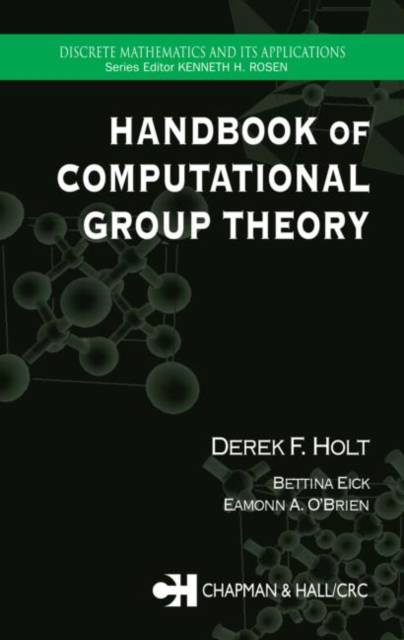
Door een staking bij bpost kan je online bestelling op dit moment iets langer onderweg zijn dan voorzien. Dringend iets nodig? Onze winkels ontvangen jou met open armen!
- Afhalen na 1 uur in een winkel met voorraad
- Gratis thuislevering in België vanaf € 30
- Ruim aanbod met 7 miljoen producten
Door een staking bij bpost kan je online bestelling op dit moment iets langer onderweg zijn dan voorzien. Dringend iets nodig? Onze winkels ontvangen jou met open armen!
- Afhalen na 1 uur in een winkel met voorraad
- Gratis thuislevering in België vanaf € 30
- Ruim aanbod met 7 miljoen producten
Zoeken
€ 216,45
+ 432 punten
Uitvoering
Omschrijving
The origins of computation group theory (CGT) date back to the late 19th and early 20th centuries. Since then, the field has flourished, particularly during the past 30 to 40 years, and today it remains a lively and active branch of mathematics. The Handbook of Computational Group Theory offers the first complete treatment of all the fundamental methods and algorithms in CGT presented at a level accessible even to advanced undergraduate students. It develops the theory of algorithms in full detail and highlights the connections between the different aspects of CGT and other areas of computer algebra. While acknowledging the importance of the complexity analysis of CGT algorithms, the authors' primary focus is on algorithms that perform well in practice rather than on those with the best theoretical complexity. Throughout the book, applications of all the key topics and algorithms to areas both within and outside of mathematics demonstrate how CGT fits into the wider world of mathematics and science. The authors include detailed pseudocode for all of the fundamental algorithms, and provide detailed worked examples that bring the theorems and algorithms to life.
Specificaties
Betrokkenen
- Auteur(s):
- Uitgeverij:
Inhoud
- Aantal bladzijden:
- 530
- Taal:
- Engels
- Reeks:
Eigenschappen
- Productcode (EAN):
- 9781584883722
- Verschijningsdatum:
- 13/01/2005
- Uitvoering:
- Hardcover
- Formaat:
- Genaaid
- Afmetingen:
- 169 mm x 244 mm
- Gewicht:
- 1029 g

Alleen bij Standaard Boekhandel
+ 432 punten op je klantenkaart van Standaard Boekhandel
Beoordelingen
We publiceren alleen reviews die voldoen aan de voorwaarden voor reviews. Bekijk onze voorwaarden voor reviews.











